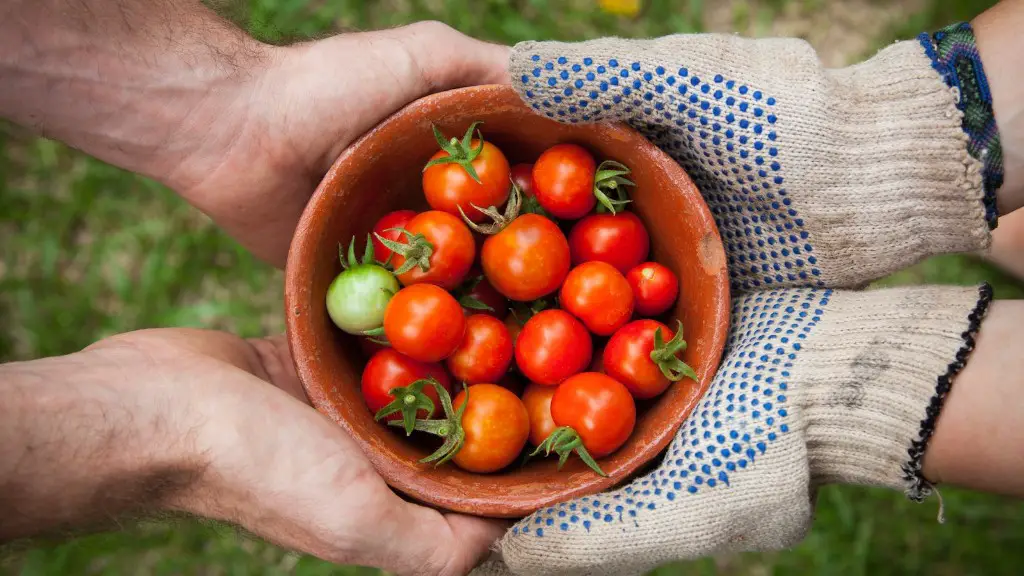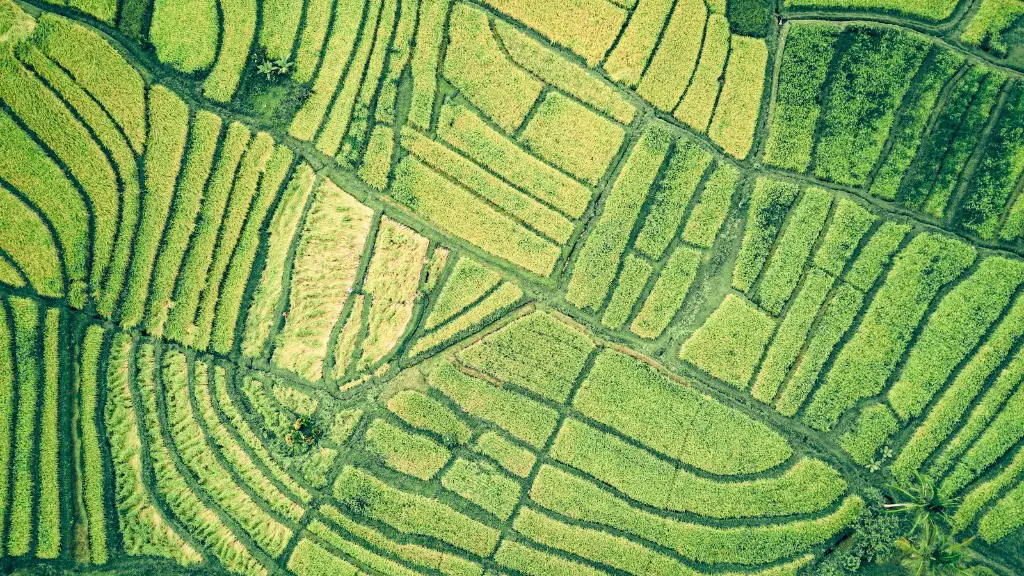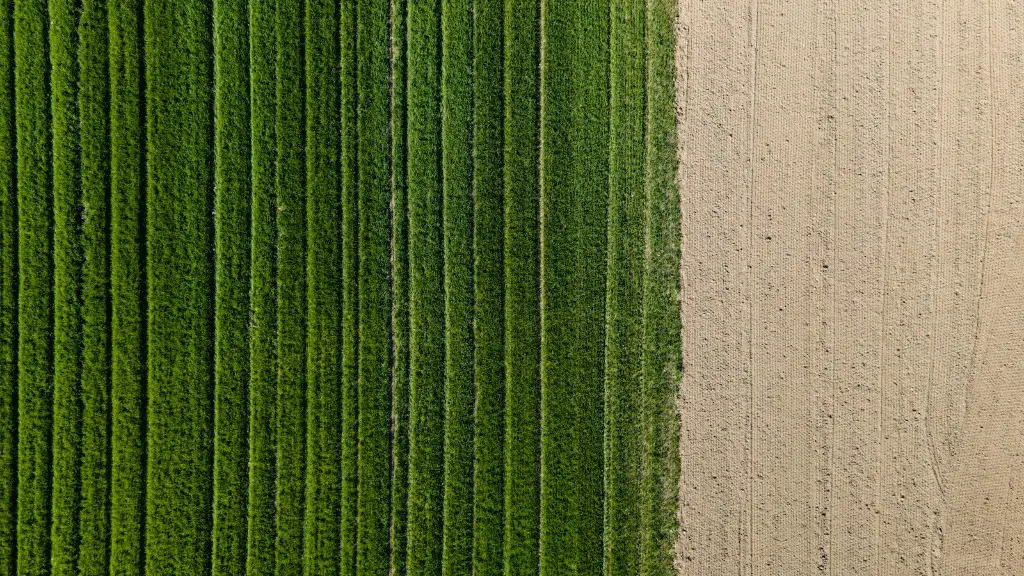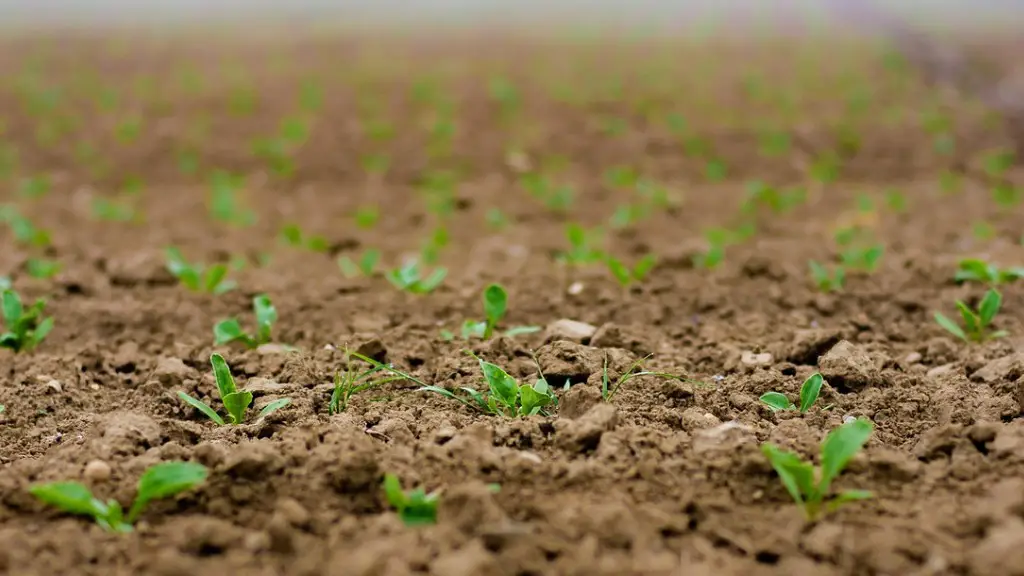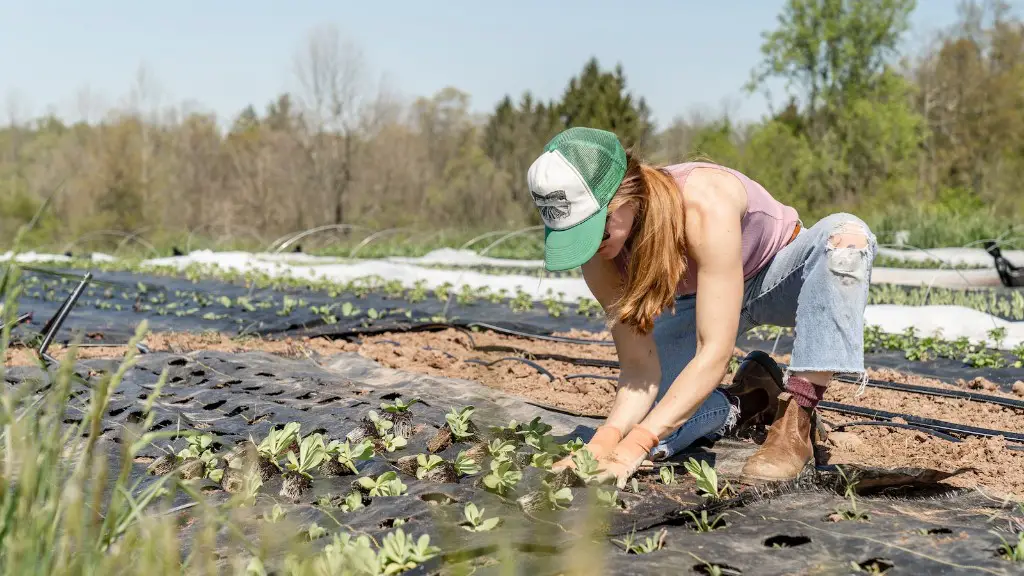In agriculture, sustainability is the ability to maintain a consistent level of productivity without negatively impacting the environment or depleting natural resources. It is a complex goal that involves economic, social, and environmental factors. While there is no one-size-fits-all definition of sustainability, there are a few key components that are often mentioned. These include protecting and restoring natural resources, promoting social and economic equity, and reducing greenhouse gas emissions.
The definition of sustainability in agriculture can vary depending on who you ask, but at its most basic, sustainability in agriculture is the production of food, fiber, or other plant or animal products using farming techniques that protect the environment, public health, human communities, and animal welfare. In other words, sustainable agriculture is an approach to farming that seeks to balance the three pillars of sustainability: environmental stewardship, social equity, and economic viability.
What is sustainability in terms of agriculture?
There is a lot of debate surrounding the term “sustainable agriculture.” At its core, sustainable agriculture is an approach to food production that is environmentally sensitive, socially just, and economically viable. Sustainable agriculture practices are intended to protect the environment, expand the Earth’s natural resource base, and maintain and improve soil fertility. Based on a multi-pronged goal, sustainable agriculture seeks to: 1) Increase profitable farm income; 2) Promote environmental stewardship; and 3) Enhance social and economic equity.
There are a number of ways to achieve these goals, but some common sustainable agriculture practices include: using organic farming methods; diversifying crops and using rotational grazing; using more efficient irrigation techniques; and investing in on-farm renewable energy production. While there is no one-size-fits-all approach to sustainable agriculture, these practices can help to reduce the negative impacts of traditional farming methods and move us closer to a more sustainable future.
Cover crops and perennials are a great way to protect and build soil health. They help prevent erosion, replenish soil nutrients, and keep weeds in check. This reduces the need for fertilizers and herbicides, which can be harmful to the environment.
What are the five main components of sustainable agriculture
Sustainable agriculture is a term that is used to describe farming practices that are environmentally friendly and that also allow farmers to be profitable. There are four main components of sustainable agriculture: environmental resource protection, product quality, profitability of individual farms, and policy questions related to the competitiveness of medium sized, family farms.
Environmental resource protection is important in sustainable agriculture because farmers need to be able to protect the resources they use in order to keep their operations running. This includes things like water, soil, and air. Product quality is also important because farmers need to be able to produce high-quality products that consumers will want to buy. Profitability is important because farmers need to be able to make a living off of their farms. Policy questions related to the competitiveness of medium sized, family farms are important because these farms are the backbone of the agricultural industry.
Sustainable agriculture is important because it allows farmers to be profitable while also protecting the environment. There are four main components of sustainable agriculture, and each one is important in its own way.
There are many ways to farm sustainably, but some of the most popular methods include permaculture, biodynamic farming, hydroponics and aquaponics, urban agriculture, and agroforestry. Each of these methods has its own unique benefits, but all of them share the goal of being more environmentally friendly and sustainable than traditional farming practices.
What are the 3 main areas of sustainability?
The three pillars of sustainability are economic viability, environmental protection and social equity. They are interdependent and need to be in balance in order to achieve sustainable development.
Sustainability is a key concept in our modern world. It refers to the idea of meeting the needs of current generations without compromising the needs of future generations. This means finding a balance between economic growth, environmental care and social well-being.
There are many challenges to achieving sustainability, but it is important that we continue to strive for it. We need to be mindful of the impact our actions have on the planet and on future generations. We need to find ways to grow our economy while also protecting our environment. And we need to ensure that everyone has the opportunity to thrive, not just survive.
Sustainability is not an easy goal to achieve, but it is one that is worth striving for. We all have a role to play in making our world a more sustainable place.
How can we keep agriculture sustainable?
The list of practices to support sustainability in farming is rather extensive and includes many different strategies. Some of these practices include polyculture, biodynamic and organic farming, integration of livestock and crops, sustainable agriculture intercropping, mulching, conservation tillage, using biofuels and zero-emissions transport, agroforestry, and more. Each of these practices can help to support a more sustainable farm, and it is important to consider which ones will work best for your specific farm and needs.
Sustainable agriculture is a type of agriculture that is practiced with the goal of sustaining the natural resources used in the production process. This includes things like water, soil, and energy. It also takes into account the impact of farming on the environment and the surrounding community.
There are many benefits to sustainable agriculture. One of the most significant is that it reduces costs. sustainable agriculture practices can help farmers save money on things like water, energy, and fertilizers. They can also prevent soil erosion, which can be costly to repair.
Another benefit of sustainable agriculture is that it is animal-friendly. Many sustainable agriculture practices are designed to improve the welfare of animals. This includes things like providing them with more space to roam and access to fresh air and sunlight.
Finally, sustainable agriculture promotes biodiversity. This is important because it helps to ensure that there is a variety of plant and animal life. This diversity is essential to the health of ecosystems and the overall environment.
What are the four ideas of sustainable agriculture
Sustainable agriculture is an approach to farming that seeks to minimize negative environmental impacts while maximizing positive social and economic outcomes. It involves using fewer inputs (such as pesticides, fertilizers, and water) and protecting and enhancing natural resources (such as soil, water, and biodiversity). Sustainable agriculture can also include agroforestry, mixed farming, multiple cropping, and crop rotation.
The 7 principles of sustainable construction are:
1. Sustainable design
2. Durability
3. Energy efficiency
4. Waste reduction
5. Indoor air quality
6. Water conservation
7. Sustainable building materials
What are the principles of sustainable agriculture?
The report sets out five key principles that balance the social, economic and environmental dimensions of sustainability: 1) improving efficiency in the use of resources; 2) conserving, pro- tecting and enhancing natural ecosystems; 3) protecting and improving rural liveli- hoods and social well-being; 4) enhancing the urban environment; and 5) promoting good governance.
There are many ways to produce food sustainably. Companion planting, cover crops, crop rotation, and strip grazing are just a few examples.
Companion planting is a method of growing plants together that benefits both crops. Cover crops are plants grown to protect and improve the soil. Crop rotation is a method of growing different crops in the same space over time to improve soil health.
Fertility from animals can be a sustainable source of nutrients for crops. Using animal manure and compost can improve crop yields. Hydroponic production is another sustainable way to grow crops. In hydroponics, plants are grown in water instead of soil.
Season extension is a method of extending the growing season by using greenhouses or other methods. This can help farmers grow crops that wouldn’t normally be able to grow in their climate.
Strip grazing is a method of grazing animals that allows the pasture to regenerate. This helps to prevent soil erosion and improve the health of the grazing area.
What are the 5 types of sustainability
Human sustainability is the ability of humans to live and thrive in an environment for an extended period of time. The three main pillars of human sustainability are social sustainability, economic sustainability, and environmental sustainability.
Social sustainability refers to the ability of humans to maintain healthy social relationships with each other. This includes maintaining strong family bonds, participating in supportive communities, and having a sense of belonging.
Economic sustainability refers to the ability of humans to maintain a stable source of income over time. This includes having a good job, being financially secure, and being able to support oneself and one’s family.
Environmental sustainability refers to the ability of humans to live in harmony with the natural world. This includes taking care of the environment, being aware of the impact of our actions on the environment, and working to protect the environment for future generations.
Reducing the usage of plastic bags is one way to help keep the oceans clean. More and more plastic pollution is ending up in the world’s oceans, harming marine life and polluting the water. One way to reduce this pollution is to avoid using plastic bags altogether. Bring your own reusable bags when you go shopping, and avoid taking plastic bags when you can.
Planting trees is another way to help protect the environment. Trees help improve air quality, conserve water, provide habitat for wildlife and can help reduce the effects of climate change. When selecting trees to plant, be sure to choose species that are native to your area and will thrive in the local conditions.
Responsible consumption and production is key to sustainability. Recycling items such as paper, plastic, glass and aluminum can help reduce the amount of waste in landfills and the need for new resources. When possible, choose products made from recycled materials, and recycle items you no longer need.
Sustainable cities and communities are built on green transportation options such as biking, walking and using public transit. These options help reduce air pollution and traffic congestion, while also promoting physical activity. When designing cities, it is important to create walkable, bikeable neighborhoods with access to
How can sustainability be achieved?
Environmental sustainability is a priority for many individuals and organizations around the world. Aspects such as environmental conservation, investment in renewable energies, saving water, supporting sustainable mobility, and innovation in sustainable construction and architecture, contribute to achieving this environmental sustainability on several fronts.
There are many different ways to approach environmental sustainability. Some focus on reducing their own carbon footprint and ecological impact, while others work to change policies and systems on a larger scale. No matter what approach is taken, it is important to remember that environmental sustainability is a journey, not a destination. There are always new ways to learn and new things to do to help make our planet a little bit more sustainable.
The SDGs
The Sustainable Development Goals (SDGs) are a set of 17 goals adopted by the United Nations in 2015. The SDGs are:
1. No poverty
2. Zero hunger
3. Good health and well-being
4. Quality education
5. Gender equality
6. Clean water and sanitation
7. Affordable and clean energy
8. Decent work and economic growth
9. Industry, innovation and infrastructure
10. Reduced inequalities
11. Sustainable cities and communities
12. Responsible consumption and production
13. Climate action
14. Life below water
15. Life on land
16. Peace, justice and strong institutions
17. Partnership for the goals
The SDGs are a plan of action for people, planet and prosperity. They address the global challenges we face, including poverty, inequality, climate change, environmental degradation, peace and justice. The SDGs are interconnected and indivisible, and they balance the three dimensions of sustainable development: economic, social and environmental.
Warp Up
The definition of sustainability in agriculture can be difficult to pin down, but essentially it means producing food in a way that is environmentally responsible, economically viable, and socially just. This can encompass everything from the way crops are grown and animals are raised, to how food is processed and distributed. To be sustainable, agriculture must be able to meet the needs of present generations without compromising the ability of future generations to do the same.
In conclusion, sustainability in agriculture means creating and maintaining a farm system that can produce food, fibers, or other plant or animal products indefinitely without damaging or depleting the natural resources upon which the farm depends.
